Munstead English Lavender
Munstead English is a compact and upright, bushy shrub grown for its aromatic flowers and leaves. Its attractive, fragrant, grey-green leaves are short and linear.
In late June and July, fragrant violet-blue flower spikes rise above the mound of leaves, attacting bees. Munstead lavender is favored for its dense growth habit and abundant flowers. It is also one of the hardiest lavenders available, which allows it survive Colorado Springs winters.
.jpg)
.jpg)
.jpg)
.jpg)
.jpg)
Munstead English Lavender
Munstead English is a compact and upright, bushy shrub grown for its aromatic flowers and leaves. Its attractive, fragrant, grey-green leaves are short and linear.
In late June and July, fragrant violet-blue flower spikes rise above the mound of leaves, attacting bees. Munstead lavender is favored for its dense growth habit and abundant flowers. It is also one of the hardiest lavenders available, which allows it survive Colorado Springs winters.
Plant details
Botanic Name
Lavandula angustifolia 'Munstead'
Pronunciation
lav-AN-dew-lah an-gus-tee-FOH-lee-uh
Mature Height
12 to 18 in.
Mature Spread
12 to 18 in.
Water usage
One Droplet: Water twice per month or less, once established.
Two Droplets: Water about once per week, once established.
Three Droplets: Water about twice per week, once established.
Flower Color
purple
Bloom time
June to July
Colorado Native
No
Natural Habitat
species native to western Mediterranean
Light Requirements
sun
Cold Hardiness
USDA zones 5-8
Elevation Limit
hardy to 8,500 ft.
Performance
Munstead English lavender is grown in several location of the Water Wise Demonstration Garden. It grows best in a hot, sunny location. Reliably hardy, it is a good lavender cultivar for the Pikes Peak region.
Maintenance
Remove faded flowers to promote continued bloom. In spring, cut back dead growth and shape for symmetry.
See in a landscape
It may surprise you, but this entire yard is xeriscape! The plants in this landscape are all well adapted to Colorado and grouped according to water need which makes the best use of water in the landscape. The turfgrass is a dwarf tall fescue and looks great with 2/3rds the water of traditional grass. A tip for large yards like this one is to plant in groups to create unity and interest and to choose larger xeric shrubs where possible to help reduce maintenance.
This yard was previously all bluegrass and required too much water and maintenance for not a lot of return. While fences and patios can be the more expensive part of a landscape, this home turned unused grass into a fenced-in, gravel patio space that adds function and design. The new grass in this yard is sheep fescue, a well-adapted grass to Colorado, that uses about one-third to one-half less water than Kentucky bluegrass. The grass is mowed only twice a year to give a native look to the design and the ornamental grasses and perennials were chosen for water savings, low maintenance and year-round interest.
This renovation eliminated all bluegrass from the plan, and instead took advantage of plants that offered a variety of color and texture. This yard had a few different challenges when considering a new landscape: slope, deer, western exposure and low water and maintenance needs. The rock chosen for this yard is slightly angular so it doesn't roll downhill easily, the plants are selected for deer resistance and heat loving which is necessary for a west facing yard that has a heat-holding rock mulch. In fact, many of these plants actually prefer rock mulch rather than wood mulch that may hold too much water too near the plant. And finally, the landscape is watered with drip irrigation to make best use of water. With drip irrigation, water is applied only where the plants need it, and not in unnecessary areas where only weeds might grow, saving time with maintenance.
Xeriscape is notzero-scape. Even if you'd like to use rock mulch for your yard, there are plenty of plants that grow well with the extra heat. Rock mulch can be great for areas with high winds where wood mulch may not stay put. Rock is used throughout this landscape, and is planted with trees, shrubs and perennials that can tolerate the extra heat. This yard has a slight slope, so a small rock wall was installed in order to flatten out the planting area near the front door. This also helps add dimension and break up the large space.
Xeriscape is a great opportunity to showcase plants with different colors and textures. This yard uses ornamental trees, evergreen shrubs, striking ornamental grasses and a native grass lawn to breathe life into a yard that used to be all Kentucky bluegrass. The parkway strip is home to the existing juniper that has been partnered with large maiden grasses and a pathway which accommodates foot traffic from the street parking. A native grass turf covers about half of the remaining yard with planting beds around the perimeter that feature low water perennials, grasses and groundcovers.
Shrubs and grasses can be a great way to landscape for lower maintenance and water savings. Evergreen shrubs in particular need little to no maintenance, and ornamental grasses need to be cut to the ground only once in early spring. This home features shrubs, grasses and a few flowering perennials to add a pop of color to this small front yard. Not only are these plants low maintenance, but they have great fall color and structure during the winter. Because drip irrigation and mulch are used, weeds are less of a problem and this yard may be enjoyed with less weed pulling.

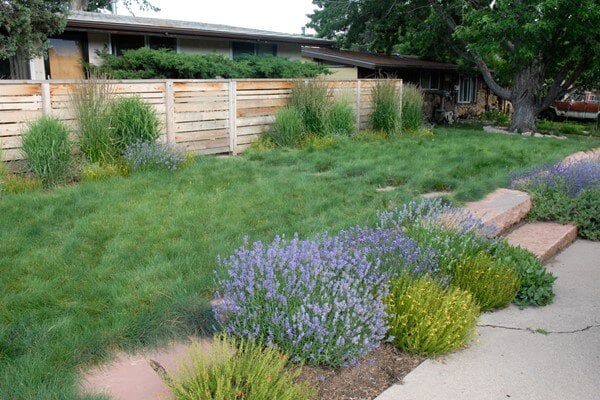
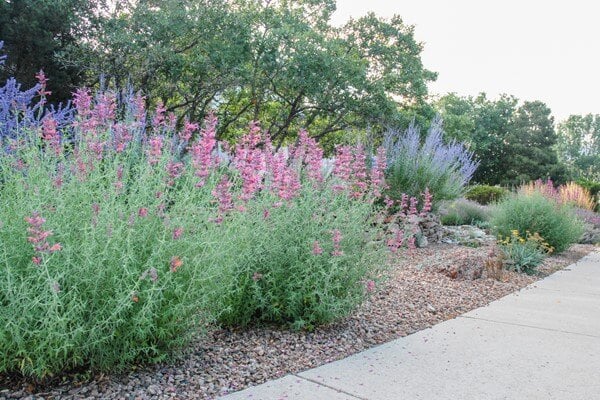
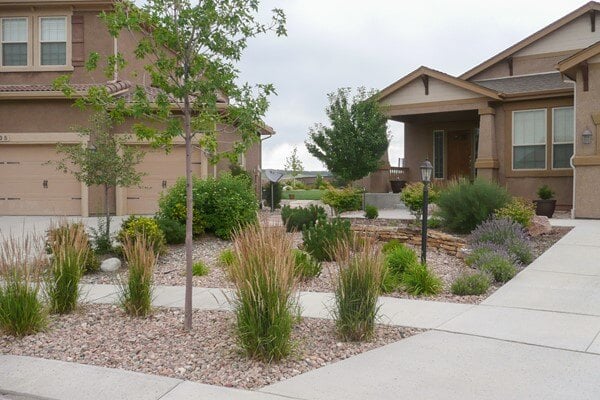
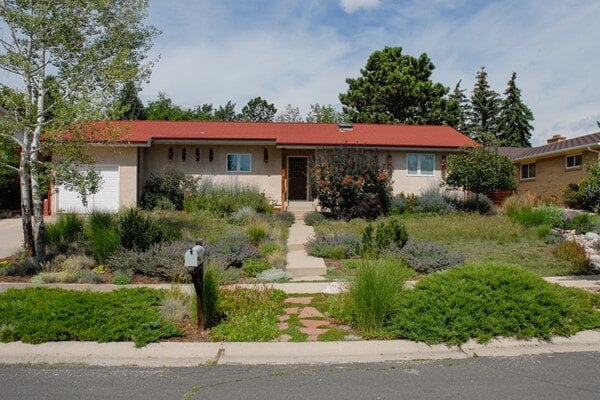
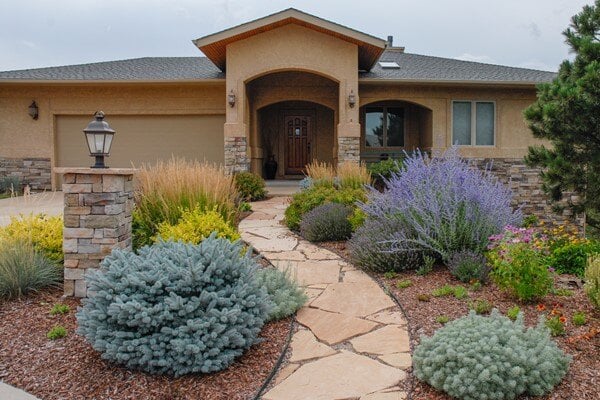
.jpeg)
.jpeg)
.jpeg)
.jpeg)
.jpeg)
.jpeg)
.jpeg)
.jpeg)
.jpeg)
.jpeg)